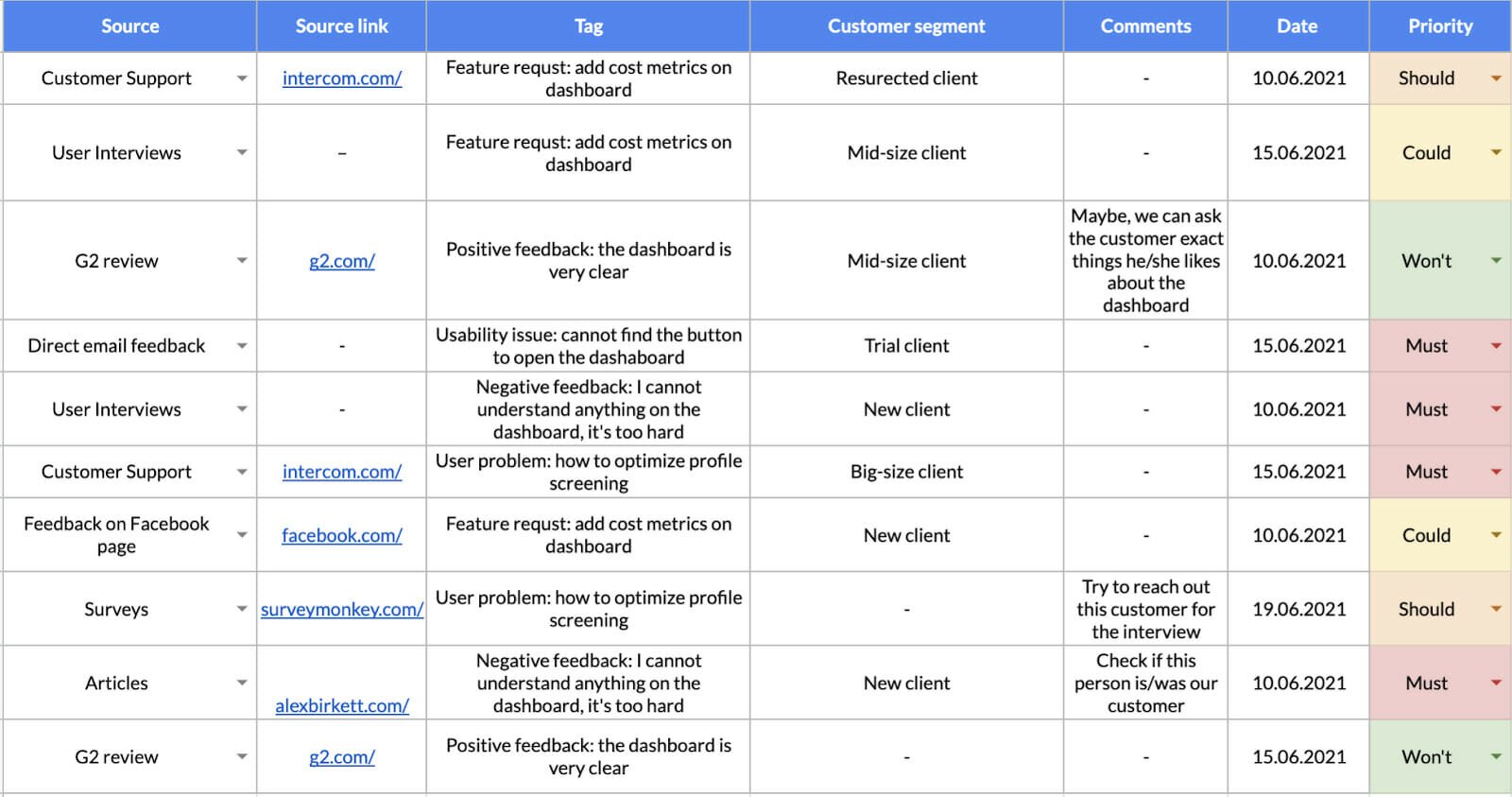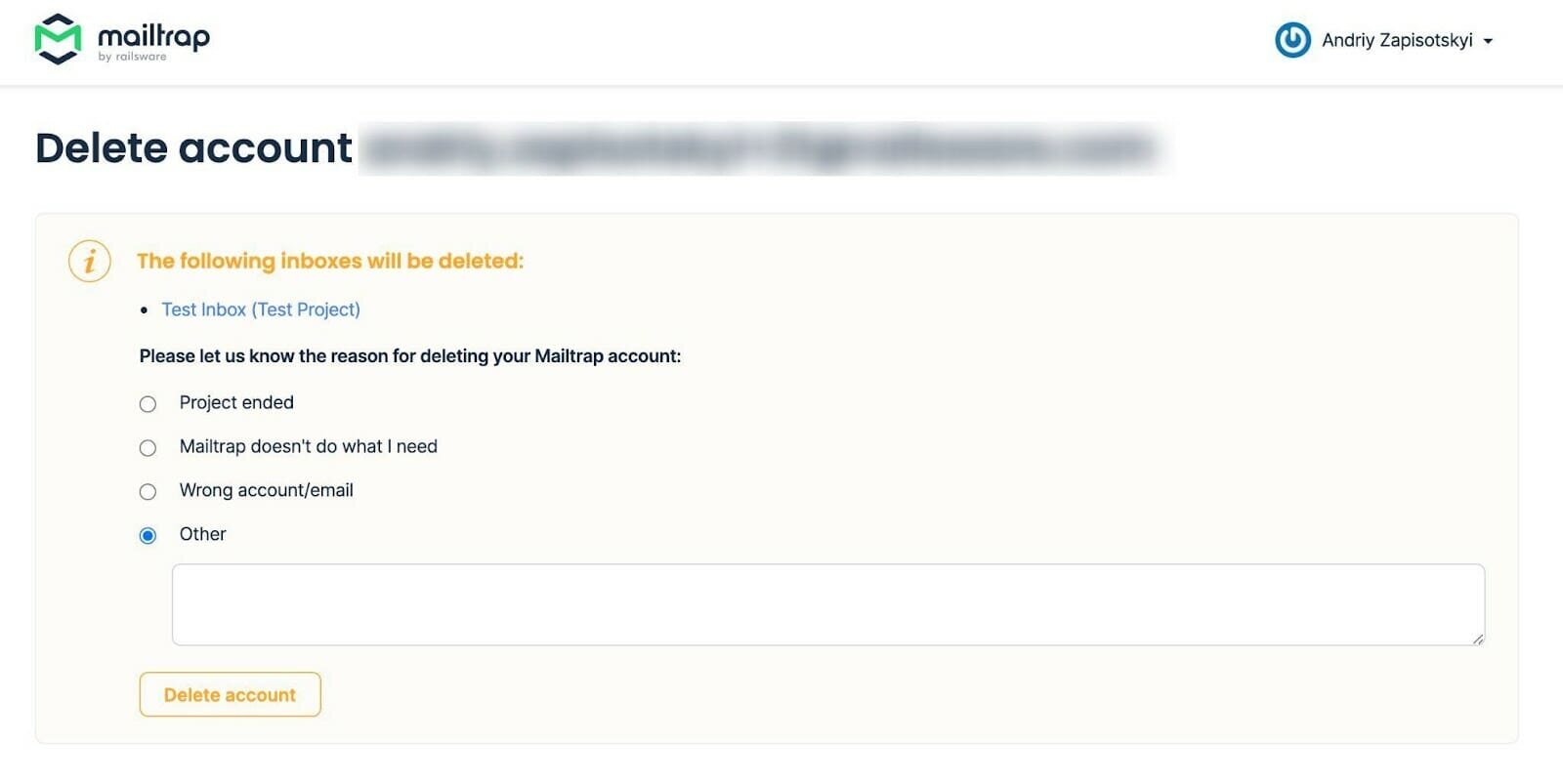The term "customer development" is gaining more and more popularity, attracting not only startups that create digital products but also offline businesses owners. Everyone who works with products is advised to communicate with customers and ask them the right product questions. However, “CustDev” is not only about conducting interviews. In the first part of this series, we looked at the most effective channels to gain customer feedback from. In this part, we'll be delving into the best ways to summarize and process it.
How to analyze the received feedback?
All the feedback you get needs to be analyzed. It becomes valuable when it can be used to make decisions and act on them. Thus, we have prepared a framework for documenting, evaluating, and prioritizing feedback.

This method allows you to gather feedback in one place, find patterns, segment, and build a good foundation for further action. Usually, after the analysis, we set priorities that we can take for additional validation, research, develop solution hypotheses or immediately take into development (for example, some apparent problems with usability).
Feel free to check a template of the framework and a brief description of how to complete it. The framework can be copied and adapted to your needs. You can collect aggregate feedback in such a table or break it down into separate tabs by channel. It's all up to you.
Customer development in Jooble
At Jooble, we take it seriously when it comes to collecting customer feedback, both for the product as a whole and for particular solutions. We built up our process and use the Scrumban methodology to drive customer-centric decisions inside the product. Having user research and analytical teams in the product structure helps us analyze customer feedback and behavior by balancing between qualitative and quantitative data. Thus is crucial for each stage of the product development lifecycle and allows us to have better decisions.
Have a read of Product development strategy: setup your product for success
At all stages of feature development or other tasks and initiatives, we interact in one way or another to obtain qualitative and quantitative feedback. We use different methods for both B2C and B2B. We often spend a lot of time analyzing behavioral and product analytics, conducting A/B testing, user tests, customer feedback surveys, looking at users in Hotjar, and collecting feedback from support and sales teams.
A few more words on the support and sales team’s feedback. For some reason, this channel is leveled most often. Our process is quite simple. Support teams put "tags" – a short description of the dialogue in a few words (for example, a bug: the feedback page does not work, a request for a feature: I want to save the phone number). These tags are then used to generate reports for product teams, which we analyze and make decisions based on the number and criticality of the request. Sometimes we can go into more detail, read conversations that indicate problems or product capabilities. The situation is similar with the B2B side of the product with the sales and account teams. In the process of analyzing feedback, we prioritize and identify what we will take into further work.
"We have a separate Slack channel where teams share important requests, suggestions from their side, and reports. There are also periodic calls to discuss existing issues and set priorities.” Anna Dzegilevich, Jooble
In addition to in-depth interviews, we also conduct moderated and non-moderated user tests. The latter helps us understand whether the functionality we make solves the user problem and makes a user-friendly, clear, and simple interface. We conduct moderated tests online or offline in the form of an interview if it is more complex product functionality. If these are minor changes, but we want to understand the reaction and user behavior, we do unmoderated user tests using Figma (Prototype), Maze, or Hotjar.
Customer development in Mailtrap
Customer development plays an essential part in Mailtrap's development and growth. We even have a separate team regularly engaged in customer development activities. We use many channels to receive and process feedback: user interviews, A/B tests, heat maps, support tickets, information written about us in the media, forums and blogs, behavioral analytics, and more. Of course, each of the methods has its own intensity. We look at user analytics every day, support tickets – several times a week, while mentions on blogs can be checked every six months.
"We look at user analytics every day, support tickets – several times a week while mentions on blogs – every six months." Andriy Zapisotskyi, Mailtrap
We usually conduct interviews in pairs, with one having a conversation and the other taking notes on all the key insights. Moreover, we create a separate Coda document for each interview session. It usually contains basic questions and information about the user. 15-20 minutes of preparation allows you to feel more confident in talking to the user.
We summarize the interview results in a single table, which allows us to see the patterns better, and what to look for in the first place. Thanks to such interview series, we validated the hypothesis, the problem, and the actual need for functionality, which the technical team has been working on for the last year already. We plan to launch a beta version soon and test the new functionality on users too.
What’s interesting, we interview customers for advertising campaigns as well. Frequent conversations give us a deeper understanding of what our customers were looking for to solve their problem, what they paid attention to when registering or buying a Mailtrap subscription. Obtained insights are then used in advertising, while product loyalty is measured through the NPS score.
We also have a feedback loop set up at the stage when the user wants to cancel the paid subscription. In the interface, we collect information about the reasons, and once the client unsubscribes, we send a plain email for additional context, asking to specify the reason for unsubscription. If the user gives an extended answer, we continue the conversation through emails or give the opportunity to arrange a call, where we discuss the decision in more detail. After the call, we usually provide our customers with a one-month free subscription as a small reward for their time.
Read how the growing importance of customer retention is changing product management.

In addition, we have now launched more campaigns to collect feedback after registering with Mailtrap. It is important for us to learn about customer expectations, their motivation to use our service and how they learned about Mailtrap.
In conclusion
Summarizing, receiving, and processing feedback for a product is one of the most critical factors in its development at various stages – from hypothesis to the launch of new functionality. Regardless of the niche, domain, or product type, this is something worth spending your time and attention on.
Setting up feedback channels for customer development activities will take time, but the result is worth the effort. This helps make the product valuable to users, achieve the company's goals, and help save time and money on product development.
Read The most effective channels to gain customer feedback: Part one and discover more content on Customer Research.







